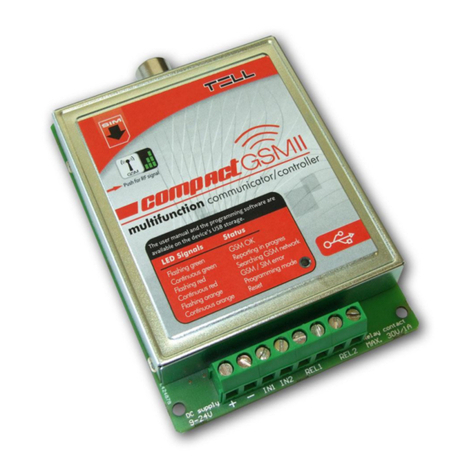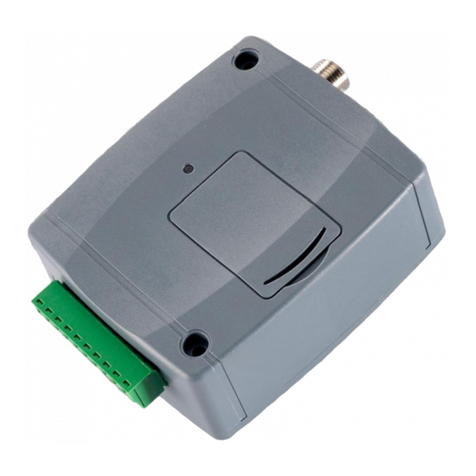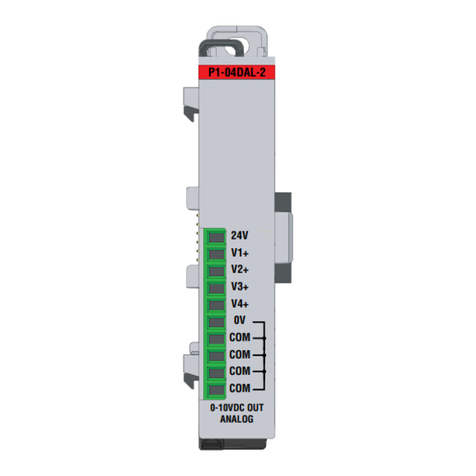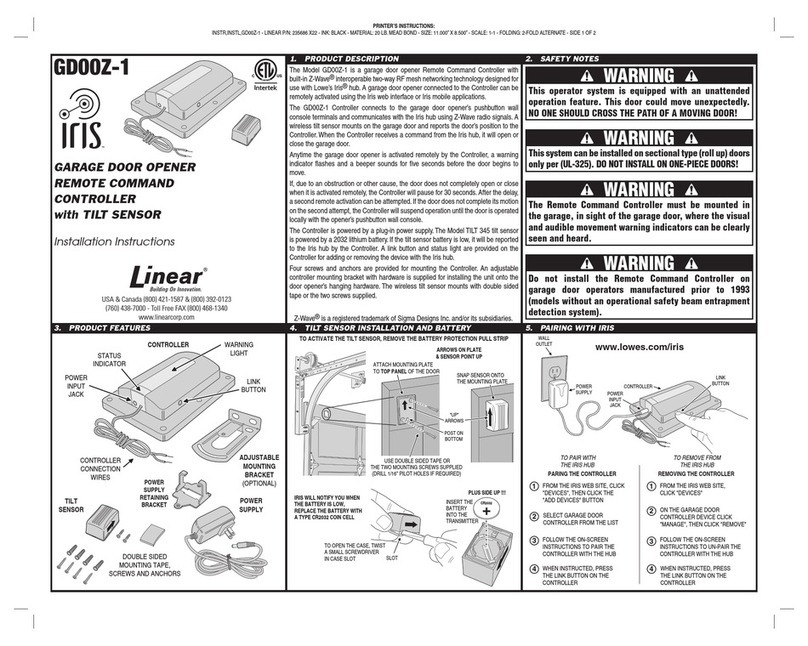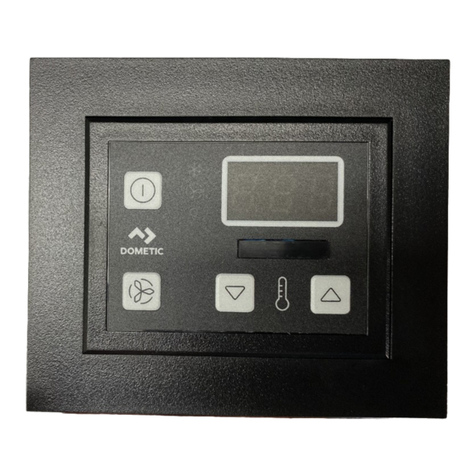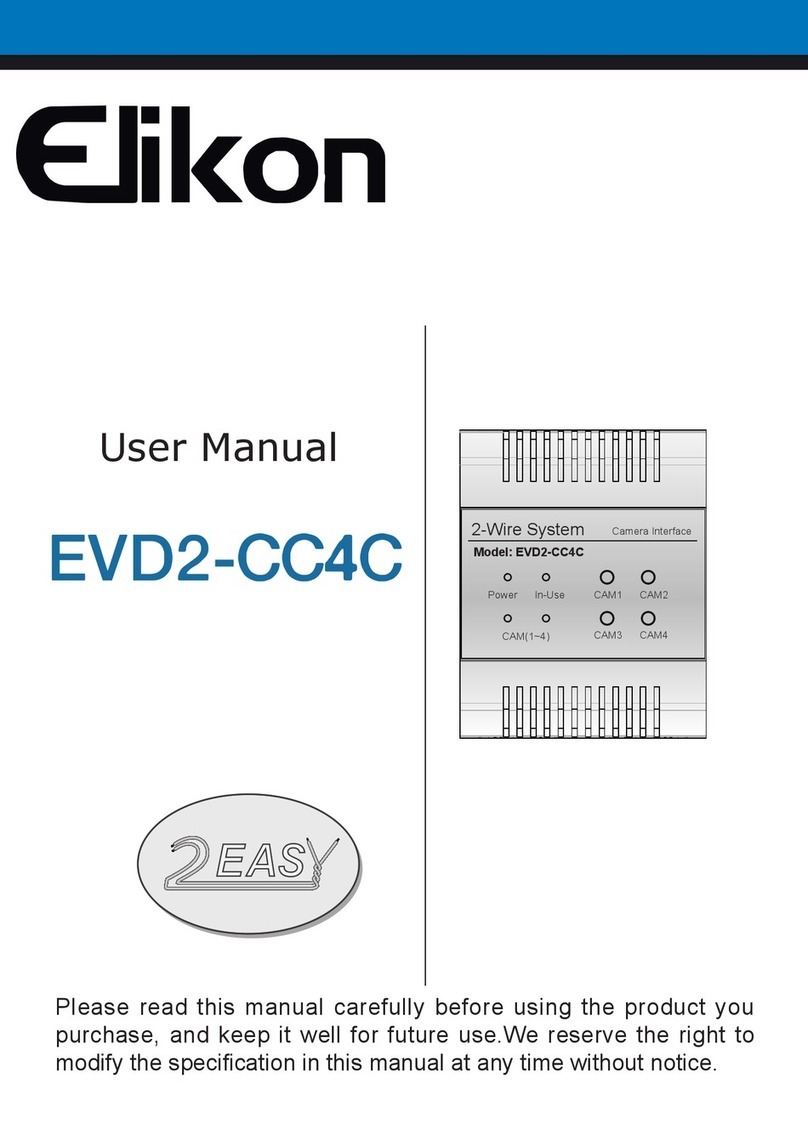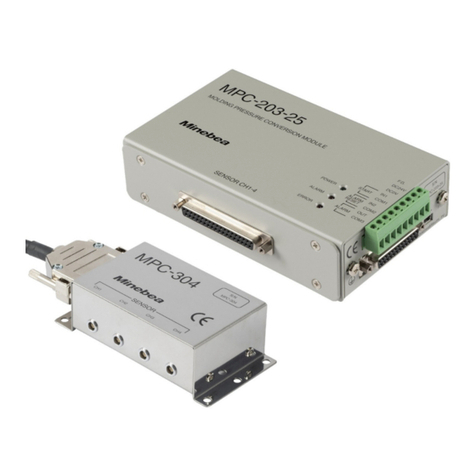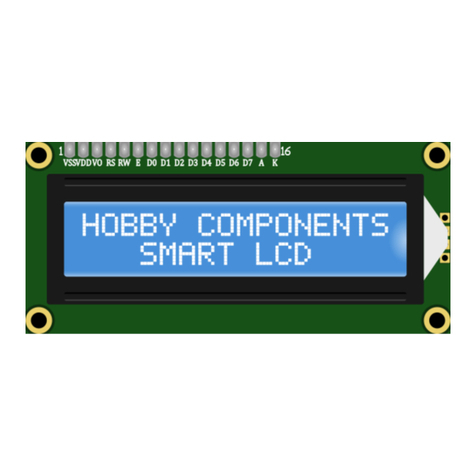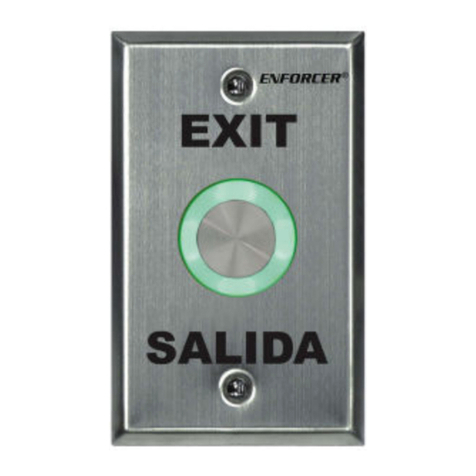tell Compact-GSM User guide

Compact-GSM
INSTALLATION AND APPLICATION MANUAL
for module version v1.21 and higher
Rev. 1.5 16.12.2009

2
Table of contents
1Module operation..........................................................................................................................3
1.1 Functions .............................................................................................................................3
1.2 Features...............................................................................................................................3
1.3 Events..................................................................................................................................3
1.4 Functions and parameters ...................................................................................................4
2Programming................................................................................................................................6
2.1 Adjustable parameters .........................................................................................................6
2.2 Program menu structure ......................................................................................................7
2.3 Structure of SMS containing settings...................................................................................8
2.4 Modification of event SMS texts...........................................................................................8
3Module overview ..........................................................................................................................9
4LED signals ..................................................................................................................................9
5Wiring diagram ...........................................................................................................................10
6Installation guide ........................................................................................................................11
6.1 Mounting ............................................................................................................................11
6.2 Putting into operation .........................................................................................................11
7Technical details.........................................................................................................................11
7.1 Technical specification.......................................................................................................11
7.2 Contents of the package ....................................................................................................11

3
1 Module operation
Application areas: can be used as accessory for alarm control panels or as individual
GSM signaling device with 2 inputs.
1.1 Functions
•GSM voice call to 4 user phone numbers on input activation with recordable
message or siren tone
•SMS with adjustable text about each event
•Report to monitoring station with Contact-ID protocol about each event
•Remote control of relay output with free call
1.2 Features
•4 user phone numbers for GSM voice call and SMS
•SMS forwarding to the first user phone number
•1 monitoring station phone number for reporting
•2 NO/NC inputs
•1 relay output
1.3 Events
•Alarm events
The communicator initiates GSM voice call with recordable message or siren tone and
sends SMS with adjustable text to 4 user phone numbers at the effect of input activation.
At the same time it sends report to 1 monitoring station phone number with Contact-ID
protocol. Event restoration is sent only to monitoring station. The module tries to perform
calls and SMS sending on an event for 10 minutes from occurrence, and it stops the
alarm of this event when time expires even if it fails to communicate to some of the
phone numbers during this time. Alarm event occurring occasionally during programming
interrupts programming, hangs up and starts immediately notification process.
•Supply voltage monitoring
The module sends SMS to the first two user phone numbers and report to the monitoring
station in at most 24 hour interval, if the supply voltage level falls for at least 1 minute
below 11,6VDC or 23,2VDC, depending on the power source (applying supply voltage
above 18VDC already means operation on 24V). Event restoration is sent in SMS to the
same phone numbers, and to monitoring station via GSM voice call. The module does
not monitor the supply voltage for the first 60 seconds from power up. Low voltage event
occurring occasionally during programming is notified right after programming is finished.
Supply voltage monitoring is enabled by default, can be disabled in the settings menu.
•Test report
The module sends test report (alive signal) in adjustable interval in SMS to the first user
phone number, as well as with GSM call to monitoring station. Time of day for test report
sending can be set by pressing the program button shortly three times consequently in
the desired moment. Then the module sends the test report and the following ones are
sent in the set interval, in the same time of day. When module reset is performed, the
test report is sent after 3 minutes from reset, and the following ones are sent likewise in
the set interval. Test report event occurring occasionally during programming is notified
right after programming is finished. If value 0 is set for this option, the module does not
send test report. Test report interval default setting is 7 days.

4
Event reporting directions:
Event T1 T2 T3 T4 S1 S2 S3 S4 Mon. station
IN1 x x x x x x x x x
IN2 x x x x x x x x x
IN1 restore x
IN2 restore x
Voltage low x x x
Voltage restore x x x
Test report x x
T1-T4: reporting to 1-4 user phone numbers with GSM voice call
S1-S4: reporting to 1-4 user phone numbers in SMS
Mon. station: reporting to monitoring station with GSM voice call (Contact ID protocol)
1.4 Functions and parameters
•Inputs
The Compact-GSM module has 2 inputs (IN1 and IN2), which can be activated
depending on the setting with normally open (NO) or normally closed (NC) contacts wired
to COM connection point. Sensitivity of inputs is 100ms, which means event is generated
only if the input is activated for at least 100ms. Alarm monitoring delay is 10 seconds for
each input, which means if an input is activated, the module ignores new signals on the
respective input for 10 seconds from activation, so no alarm events are generated in this
period. When the 10s delay expires, the input becomes available again for activation.
•Relay output
The relay output can be activated by initiating a call to the module’s phone number from
the 4 user phone numbers using identification of caller phone number, or from any phone
number without identification, depending on the setting. Relay control mode is
monostable, activation time is adjustable between 0-9999 seconds. Default setting: 1s.
•User phone numbers
Maximum 4 phone number can be set, where the module sends reports with GSM voice
call and SMS. The maximum length of the phone numbers should not exceed 16
characters and international format should not contain “+” character (e.g. 0036….).
Already set phone number can be erased by pressing the „#” key instead of entering a
new number.
•Call and SMS limitation
The module is equipped with internal call and SMS limitation. The function allows 50
outgoing calls and sending of 50 SMS messages per day.
•Confirmation
Confirmation of alarms sent to user phone numbers (with GSM voice call) may be
necessary. In this case the module recalls the number until the user confirms the alarm
event. If the confirmation function is enabled, then the event can be confirmed by
pressing „¾” key and all alarm events (calls and SMS) in progress can be stopped by
pressing „#” key. By default the confirmation function is disabled.

5
•SMS forwarding
The module can forward incoming SMS messages to the first user phone number. SMS
forwarding function is enabled by default, if not necessary, can be disabled in the settings
menu. SMS forwarding is limited to 5 messages per day.
•Monitoring station phone number
The module supports 1 monitoring station phone number, where it reports all events
using Contact-ID protocol. The maximum length of the phone numbers should not
exceed 16 characters and international format should not contain “+” character
(e.g. 0036….). Already set phone number can be erased by pressing the „#” key instead
of entering a new number.
•Event codes and SMS texts
A Contact-ID event code (3 digits) can be assigned to each event, which identifies the
event at the monitoring station. The SMS texts for events are preset according to the
following table, but can be modified by sending command SMS to the module. The
default settings for event codes and SMS texts are the following:
Event Contact-ID event code SMS text
Alarm input 1 130 ALARM1
Alarm input 2 130 ALARM2
Low supply voltage 302 LOW VOLTAGE
Voltage restore 302 BATTERY OK
Periodic test report 602 TEST REPORT
•User account ID
The user account ID is a 4 digit identifier which is necessary for reporting to monitoring
station and is supplied by the monitoring station. The module supports only decimal
characters. Default setting: 0000.
•Recordable voice messages
For each of the two inputs a voice message can be recorded with a maximum length of 6
seconds each. If no message is recorded, the module uses instead a built-in siren tone
when calling the user phone numbers. The recorded voice messages cannot be erased
separately, are automatically replaced with the built-in siren tone if the settings are
restored to factory default (module reset).
•Caller identification
Caller identification is a security function useful in the course of relay remote control. If
enabled, the module checks the caller’s phone number and activates the relay only when
called from one of the 4 user phone numbers. For this it is essential to have the phone
number information sending service enabled on the caller’s SIM card and in the phone as
well. At the same time, phone number information detection service must be enabled on
the SIM card placed into the module. The caller identification function is disabled by
default, so the relay output may be activated from any phone number.

6
•Program push-button
The program push-button is placed on the panel, in the vicinity of the GSM antenna
socket. Functions of the push-button are the following:
- Entering programming mode: for this keep the button pressed for 3…5 seconds,
then release (see „Programming” and „LED signals” chapters)
- Setting time of day for test report sending: press the program button shortly
three times consequently in the desired time of day. Thereafter the test report is
sent and the following ones are sent in the interval entered for test report period
setting.
- Stop notifications in progress: pressing the button shortly (>1sec) stops all
notifications in progress, then GSM signal strength is displayed
- GSM signal query: after pressing the button shortly (>1sec), the number of green
blinks indicate the level of the GSM signal on 10-point scale.
Attention! This operation stops at the same time all event signalizations that may
be occasionally in progress!
- Restore factory default settings (reset): this function restores all parameters to
factory default, according to “Adjustable parameters” table. For this keep the
button pressed for at least 10 seconds, then release (see „LED signals” chapter)
2 Programming
Programming of the module can be performed through call center. For this the program
button must be pressed for 3-5 seconds, then released. Thereafter the module enters the
programming mode and accepts call to its SIM card from any phone number within
3 minutes. After calling the module, menu item selection and settings can be performed
in the voice menu with DTMF commands, by pressing the correspondent keys on the
phone. The module exits programming mode automatically if the call is hanged up or if
no key is pressed for 2 minutes (in this case it hangs up the call itself).
2.1 Adjustable parameters
Parameter Default Parameter Default
Input 1 (NO/NC) NO User account ID 0000
Input 2 (NO/NC) NO Test report period (0-99 days) 7
Relay timer 0-9999s 1s SMS forwarding (Y/N) Yes
User phone numbers 1…4 - Supply voltage monitoring (Y/N) Yes
Confirmation from 1…4 ph.nrs No Voice messages 1,2 Siren tone
Monitoring station phone nr - Caller identification (Y/N) No
Contact ID event codes 1...4 130,130,302,602

7
2.2 Program menu structure
Key 1: User phone number settings
Key 1: Enter first user phone number
Key 1: Enable confirmation request
Key 0: Disable confirmation request
Key 2: Enter second user phone number
Key 1: Enable confirmation request
Key 0: Disable confirmation request
Key 3: Enter third user phone number
Key 1: Enable confirmation request
Key 0: Disable confirmation request
Key 4: Enter fourth user phone number
Key 1: Enable confirmation request
Key 0: Disable confirmation request
Key 2: Input and relay parameter settings
Key 1: Configure input 1
Key 1: Normally Closed
Key 0: Normally Open
Key 2: Configure input 2
Key 1: Normally Closed
Key 0: Normally Open
Key 3: Enter relay active state duration
Key 3: Monitoring settings
Key 1: Enter monitoring station phone number
Key 2: Enter user account number
Key 3: Event code settings
Key 1: Enter event code for input 1
Key 2: Enter event code for input 2
Key 3: Enter event code for low supply voltage
Key 4: Enter event code for periodic test report
Key 4: Other parameters and settings
Key 1: Enter test report period
Key 2: SMS forwarding settings
Key 1: Enable SMS forwarding
Key 0: Disable SMS forwarding
Key 3: Supply voltage monitoring settings
Key 1: Enable supply voltage monitoring
Key 0: Disable supply voltage monitoring
Key 4: Caller identification settings
Key 1: Enable caller identification
Key 0: Disable caller identification
Key 5: Record voice messages
Key 1: Record voice message for input 1
Key 2: Listen to voice message of input 1
Key 3: Record voice message for input 2
Key 4: Listen to voice message of input 2
Key 6: Settings query
Key 1: Send settings in SMS to the caller’s phone number
¾key: return to previous menu, can be used in any submenu.

8
2.3 Structure of SMS containing settings
The module can send current settings in SMS (see item 6/1. of the programming menu).
The settings are sent in 2 SMS messages, having the following structure:
Example:
CompactGSM settings (1):
TEL1=06301111111/Y (TEL1…TEL4 = the 4 adjustable user phone numbers, after
TEL2=06302222222/Y the phone numbers the confirmation setting can be found)
TEL3=06203333333/N /Y = event must be confirmed from this phone number
TEL4=06704444444/N /N = event confirmation is not requested from this phone nr.)
M STAT=0615555555 (M STAT = monitoring station phone number)
CompactGSM settings (2):
Z1=NO (input 1 setting: NO= normally open)
Z2=NC (input 2 setting: NC= normally closed)
RELTIME=0002 (relay active state duration in seconds)
USER ID=1234 (4 digit decimal user account ID)
EVENT_Z1=130 (Contact ID code of input 1 - 130=burglary)
EVENT_Z2=130 (Contact ID code of input 2 - 130=burglary)
EVENT_LOW V=302 (Contact ID code of low supply voltage)
EVENT_TEST=602 (Contact ID code of periodic test report)
TESTDAYS=7 (Automatic test report sending period in days)
LOW V REP=Y (Supply voltage monitoring setting - Low voltage report:
Y=enabled, N=disabled)
CALLID CHK=N (Caller identification: Y=enabled, N=disabled)
2.4 Modification of event SMS texts
If it is needed, the default texts of event SMS messages can be modified by sending
command SMS to the module. The command SMS has to be sent when the module is in
programming mode, therefore it is recommended to write the command SMS prior to
turning the module in programming mode. To turn the module in programming mode, the
program button must be pressed for 3-5 seconds, then released. Thereafter the
command SMS has to be sent within 3 minutes.
Structure of the command SMS:
Event Command SMS to be sent
Alarm input 1 ¾SMS1=desired message#
Alarm input 2 ¾SMS3=desired message#
Low supply voltage ¾SMS5=desired message#
Voltage restore ¾SMS6=desired message#
Periodic test report ¾SMS7=desired message#
It is possible to send more commands in one SMS, but each command must start
with ¾character and respectively end with #character, and the length of the whole SMS
must not exceed 160 characters.
Example: ¾SMS1=Door opening#¾SMS3=Indoor alarm#¾SMS5=Battery low#......etc.
The module sends response SMS if the modification was successful or if the command
SMS was faulty and therefore the modification failed.

9
3 Module overview
4 LED signals
Red is continuously lit No GSM network available, or phone
restart/power up in progress
Red blinks fast
Green blinks with longer intervals Event transmission in progress
Green blinks impulsely,
Red is not lit
GSM network is available,
standby status
Green performs a determined number of
blinks after pressing the program button GSM signal strength query
Orange blinks fast Programming mode
Orange is continuously lit Restore settings to factory default (reset)

10
5 Wiring diagram
•For Normally Open setting:
•For Normally Closed setting:

11
6 Installation guide
6.1 Mounting
•Test the GSM signal strength with your mobile phone. It may happen that the signal
strength is not sufficient in the desired mounting place. In this case the planned
installation place can be changed before mounting the device.
•Do not mount the unit in places where it can be affected by strong electromagnetic
disturbances (e.g. in the vicinity of electric motors, etc.).
•Do not mount the unit in wet places or places with high degree of humidity.
•The wires connected to the contact terminals should not be longer than 3 meters!
•Connecting the GSM antenna: the GSM antenna can be fixed in the FME-M socket
found on the panel. The antenna supplied with the module provides good
transmission under normal reception circumstances. In case of occasionally
occurring signal strength problems or/and wave interference (fading), use another
(directed) type of antenna or find a more suitable place for the module.
6.2 Putting into operation
•Disable PIN code request, voicemail and notification in SMS about missed calls on
the SIM card placed into the module.
•Enable caller ID sending service on the SIM card at the GSM service provider.
•If caller identification is used, this service must be enabled on the SIM card
placed into the module (a few types of SIM cards do not have this function
enabled by default).
•Check the SIM card to be placed into its case properly.
•Check the antenna to be fixed properly to the Compact-GSM module.
•Check the wires to be connected as instructed by the wiring diagram.
•The device can be powered up. Make sure that the power supply is sufficient for the
load of the module. The quiescent current of the module is 50mA, however it may
increase up to 200mA during communication and relay control.
7 Technical details
7.1 Technical specification
Supply voltage: 9-30 VDC, 9-18VAC,
or by using the serial diode: 18-30VAC
Nominal current consumption: 50mA @ 12VDC, 27mA @ 24VDC
Maximum current consumption: 200mA @ 12VDC, 100mA @ 24VDC
Operating temperature: -20ºC - +70ºC
Transmission frequency: GSM 900/1800, 850/1900 MHz
Maximum relay output load: 5A @ 24VAC/DC
Dimensions: 82 x 67 x 22mm
Weight: 80g (packed: 100g)
7.2 Contents of the package
•Compact-GSM module
•GSM 900MHz / 1800MHz antenna
•Plastic spacer support / snap fasteners
•Diode
•Application manual, warranty card
Table of contents
Other tell Control Unit manuals
Popular Control Unit manuals by other brands
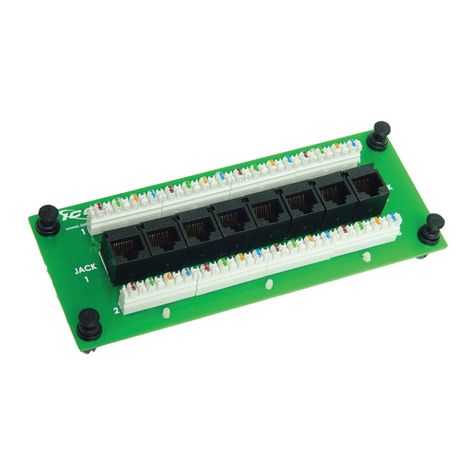
ICC
ICC CAT 5e quick start guide
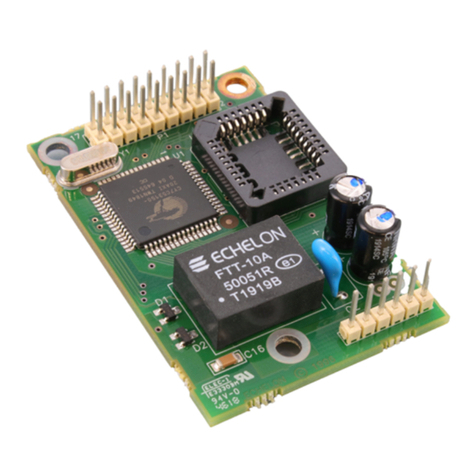
Echelon
Echelon LONWORKS FT 5000 user guide

MachMotion
MachMotion X15-250 installation manual
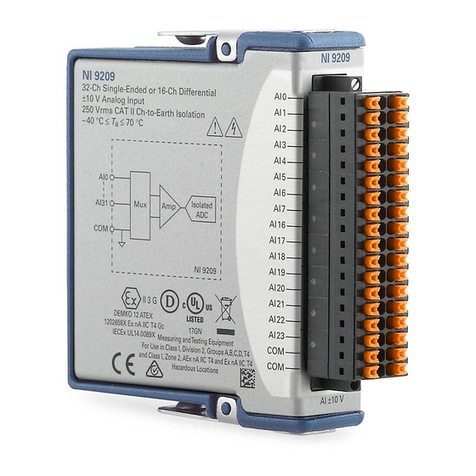
National Instruments
National Instruments NI 9209 CALIBRATION PROCEDURE
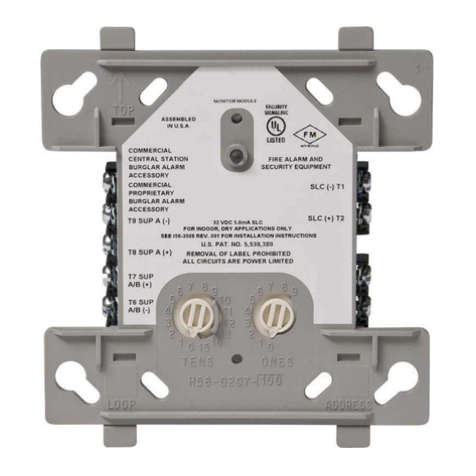
Honeywell
Honeywell NOTIFIER NZM-100 Installation and maintenance instructions
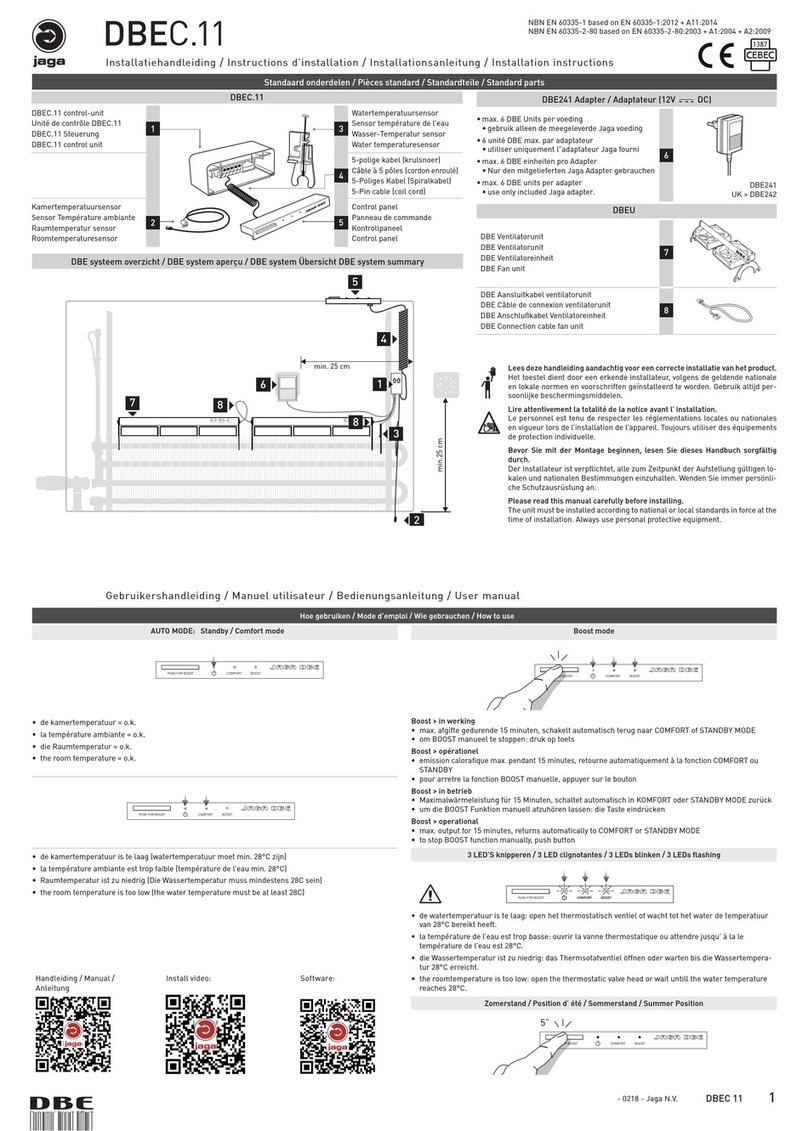
Jaga
Jaga DBEC.11 installation instructions
